Steelsring Canon EF to Fujifilm GFX Autofocus Adapter Test
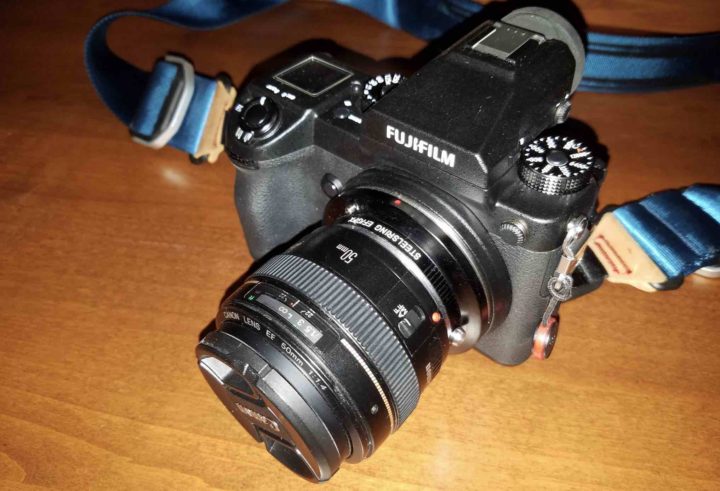
GUEST POST FEATURE
Write Your Articles Directly On FujiRumors!
guest post by Peter Sills – www.digitalfocus.net
Several months ago, I first read about adapters that would allow me to mount my Canon lenses to my new Fujifilm GFX 50S. Interested, I reached out to the various companies mentioned inquiring about their availability and acquiring one for potential testing. Of these, only one, Steelsring, got back to me. After some conversation, we agreed that I would test the unit and write an article as to my findings. Several months later, in December of 2017, I received my adapter.
I was intrigued. When first released, the Steelsring EF>GFX adapter was reported as being the only adapter of its kind which would also property report the Lens EXIF information to the camera and turn off the automatic lens correction (for the Fuji 63mm lens) in the process. Having this ability allows you to create your own special “Lens Profiles” for the camera/lens/adapter combination – something I find quite useful and important.
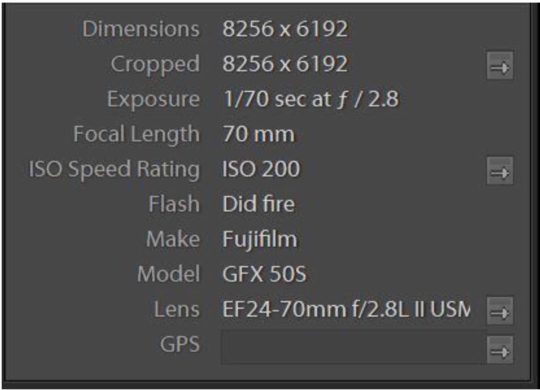
When the unit arrived, it came in a very attractive wood and aluminum case. It was extremely well packaged and after careful examination appeared to be well constructed as well.
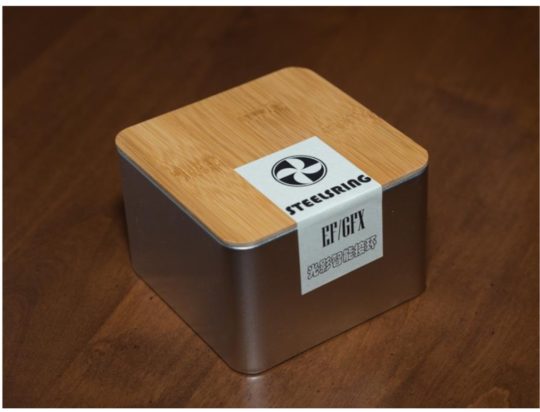
Of course, how these adapters operate is that on one side of the adapter is the Native Mount (Fuji) side, and on the opposing side is the Lens Mount (Canon side). Most adapters are “passive” so there are no contact pins. The Steelsring adapter is of a new generation of mounts that allow a camera to actually obtain accurate focus using “non-native” lenses. In this case Canon lenses.
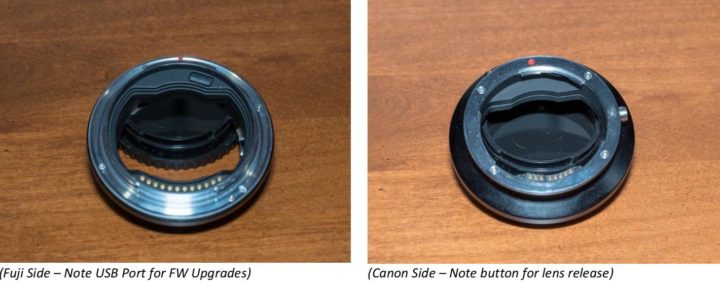
So, the next step was to mount this to my Fuji GFX and begin testing.
I found the fit to be quite tight and secure, both on the Fuji side and on the Canon side. I would say even more so on the Fuji side. Many of the Canon lenses I found “clicked” right in to place. A few required a little adjustment of the lens release button to ensure they were indeed “locked-in”. Once this was properly engaged, the connection was tight, with no looseness or “wobble” at all.
My objectives were quite simple.
- Determine if a lens adapter, in this case an auto-focus lens adapter, could provide usable AF accuracy and speed using my existing Canon lenses.
- Determine if the “vignetting” of these lenses would be significant enough to render them useless or usable for my testing.
Alright, so how to begin?
I setup my Fujifilm GFX 50S on a tripod and placed a small “Princess Leia” figure on another. (In honor of the recently passed Carrie Fisher.) The figurine is only about 3.5” in height and extremely detailed. I thought it would make an excellent subject. I set up a remote trigger and a single Godox TT685F off- camera for illumination. Sample images were all shot at ISO 200 at both the widest aperture and at f/11.
As for distance from the subject, the following is the list of lenses tested, along with the distances they were tested at. The subject was placed at approximately 2 feet off of the back wall.
Canon 50mm f/1.4 – 3 feet
Canon EF 85mm f/1.2L USM Mk II – 4 feet
Canon EF 100mm f/2.8L Macro IS – 3 feet
Canon 16-35mm f/2.8L USM Mk I – 3 feet
Canon 24-70mm f/2.8L USM Mk II – 3 feet
Canon 24-105mm f/4L USM Mk I IS – 3 feet
Canon 70-200mm f/2.8L IS II – 7 feet
Canon 100-400mm f/4.5-5.6L IS – 7 feet
Canon 70-300mm f/4-5.6 IS – 7 feet
Sigma 12-24mm f/4.5-5.6 DG HSM – 3 feet
These lenses were chosen to represent a range of testing from common primes to zooms, from older versions of lenses to current versions of lenses. The Sigma lens chosen was due to its unique an un- common focal length – had to throw a curve-ball in there.
When I first received the adapter and began testing, I must say that the focus was erratic at best. Some lenses, such as the 100 Macro, appeared to focus accurately and quickly. Some, such as the 85 f/1.2, did not. Staying in contact with Steelsring I began to report my findings.
It was asked if I would be willing to report back what I found and hold off on releasing the article until they had a chance to work on the issues. This would only take the form of sending me new Firmware Updates to try out on the various lenses I was testing. Well, I have to report, that as of the final FW I received (FW 1.5e), I stand impressed.
So, after approximately seven updates over the course of only a couple of weeks, this adapter has gone from exactly what I expected (slow, unreliable, and a bit “clunky”) to a truly usable and worthwhile bit of kit.
During this time, AF accuracy took a giant leap forward as did focus speed. Each of these lenses focuses at least as fast as the native lenses I have for the Fuji – some of them even faster. Accuracy is extremely good, especially wide-open (check out the 100% crops). In addition to being the first (and possibly only) adapter to properly report the lens information to the EXIF in the image, the Steelsring adapter is the only one I am aware of which also supports manual focus – using “focus by wire” lenses (such as the 85mm f/1.2)
TEST RESULTS – VIGNETTE
The first test was to see how well/poorly some of the Canon lenses would vignette on the Fuji body. The Lenses were tested both “wide-open” and at f/11. Zoom lenses were also tested at the extremes of their zoom range. Lens hoods were affixes to all lenses in order to demonstrate “worst-case” scenarios for the vignette.
Ignore any difference in exposure/color/etc. These images are straight out of Lightroom with no adjustments other than resizing.
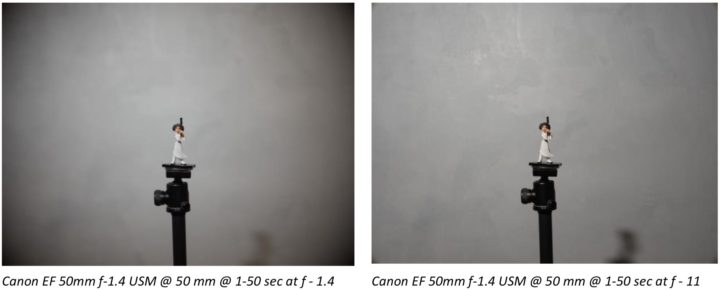
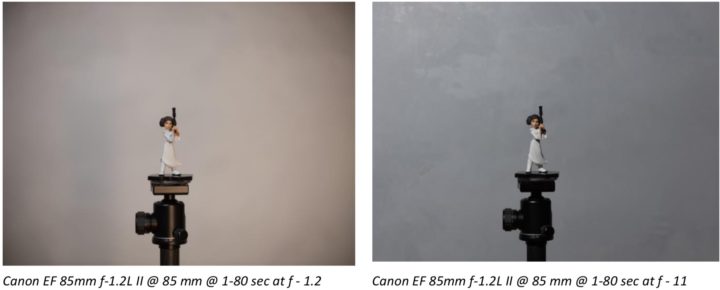
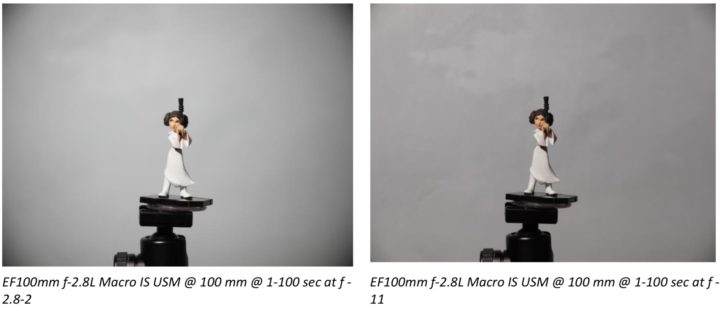
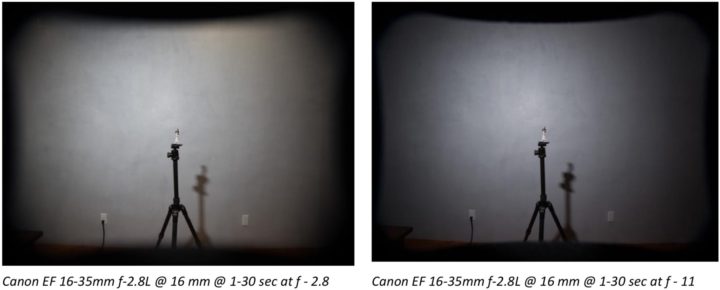
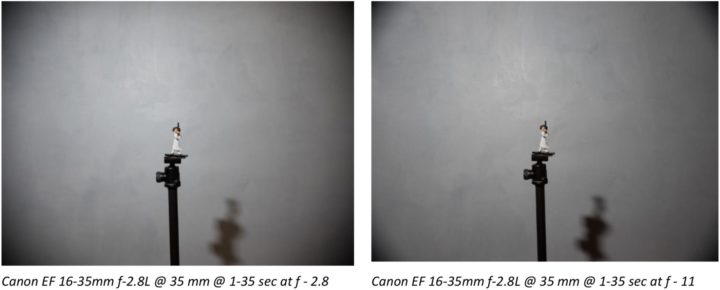
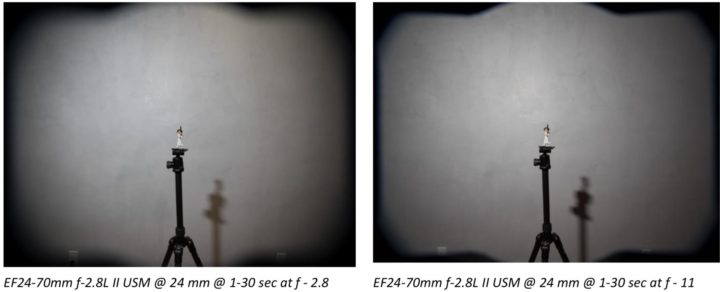
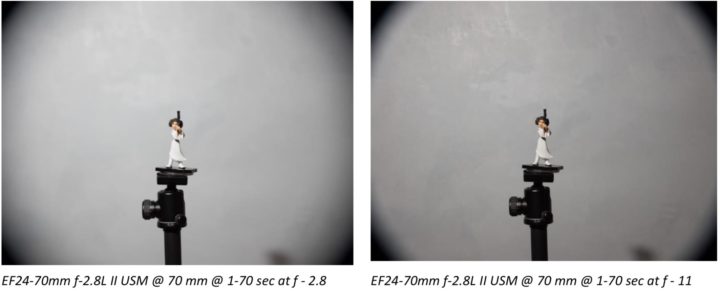
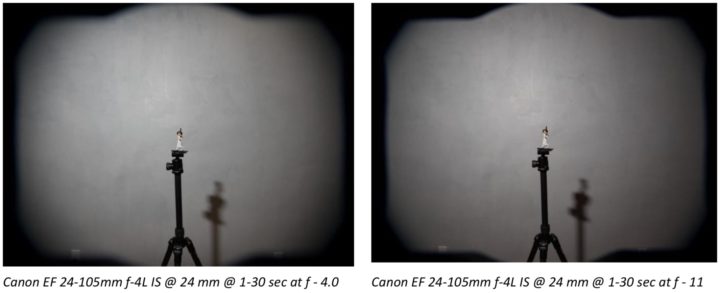
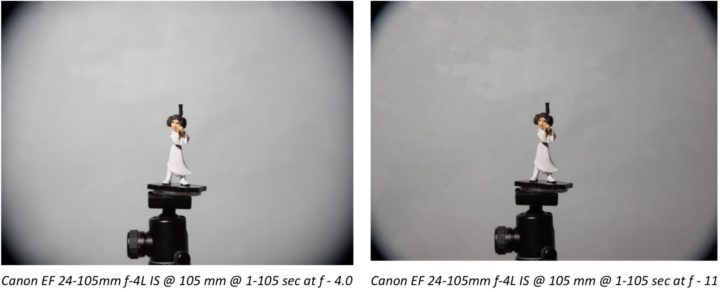
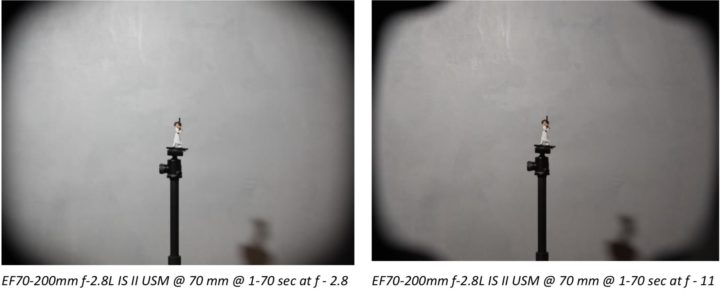
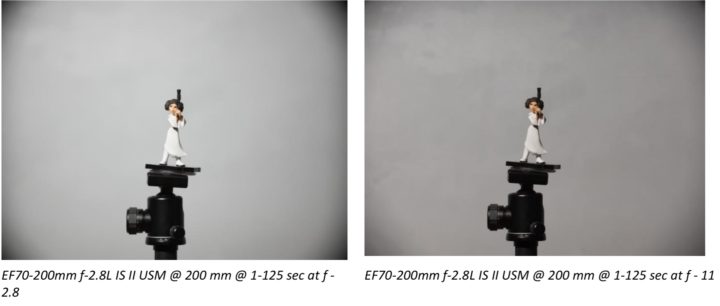
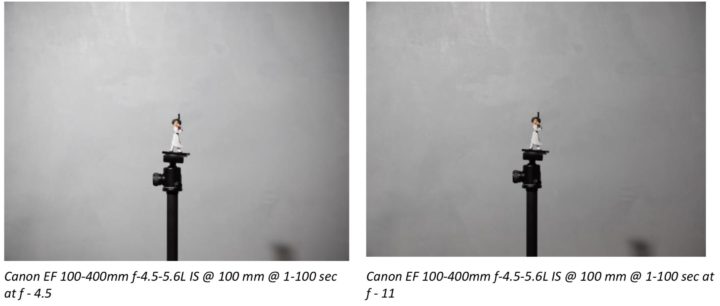
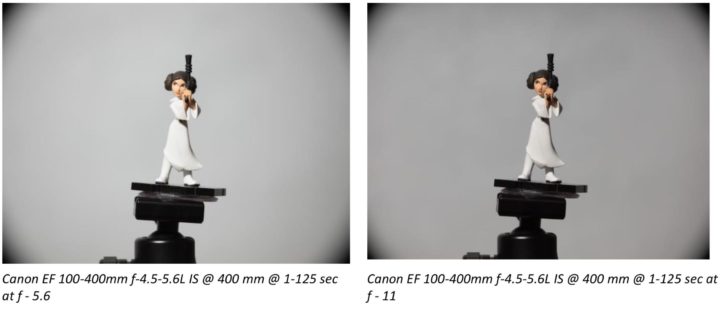
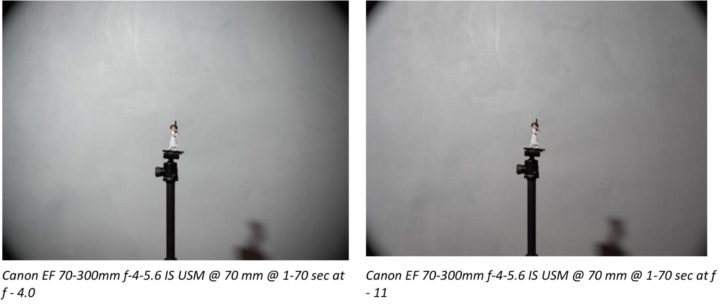
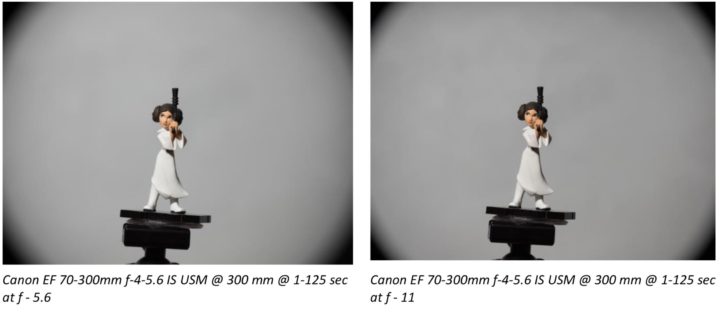
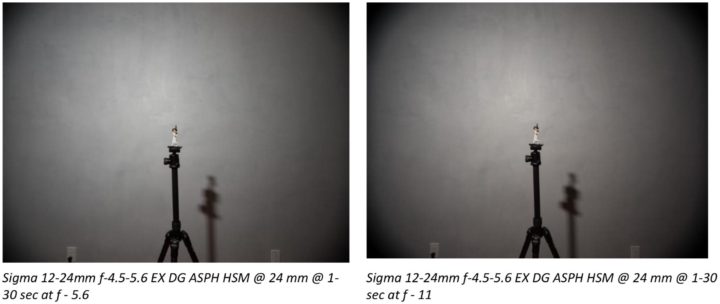
Notes: these images are to be used to evaluate the Vignetting performance of the given lens, at the given focal length and aperture of the lens ONLY! As mentioned, no adjustments have been made for exposure, color, etc. You will also note that there is NO IMAGE FOR THE SIGMA LENS @ 12mm. We could not get this lens to focus at this focal length during our formal testing. Stay tuned for yet another FW update!
TEST RESULTS – 100% CROPS
The next set of images are taken from the above images, but are 100% crops of the subject, our lovely Princess Leia. I am proving these as I know a lot of you truly enjoy your “pixel-peeping” and while they do show how well the adapter works with the AF in both the Fuji GFX and Canon Lenses, remember that not all lenses are created equal and some are normally softer than others are.
(Also, please be aware that on some lenses when wide-open with a shallow depth of field, it was often quite difficult to focus on the eye of the subject – which after all is only 3/5 inches tall!)
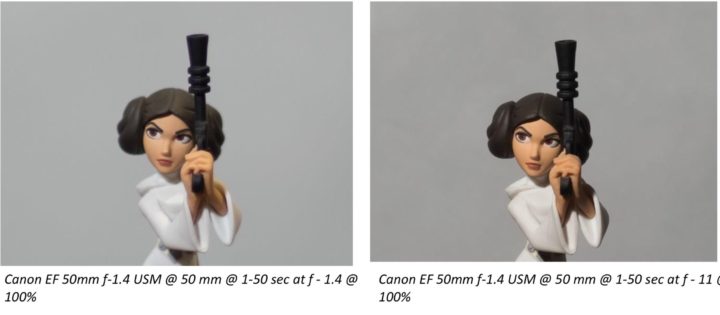
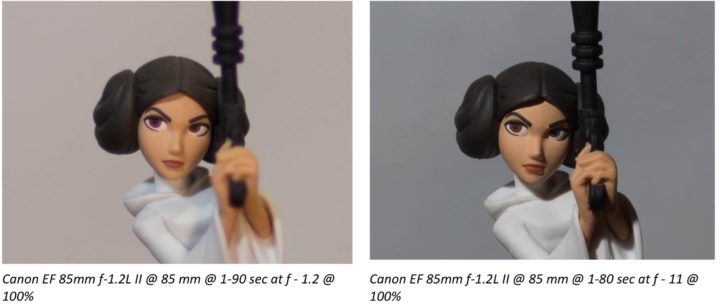
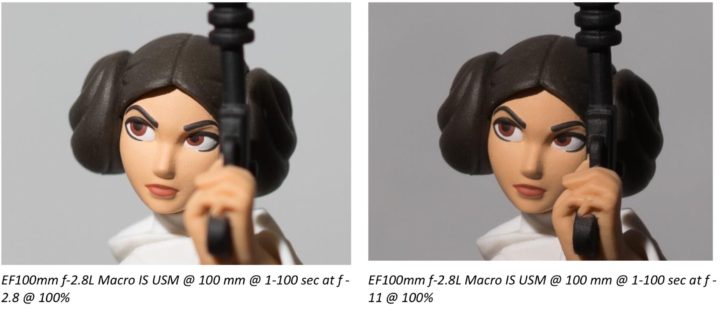
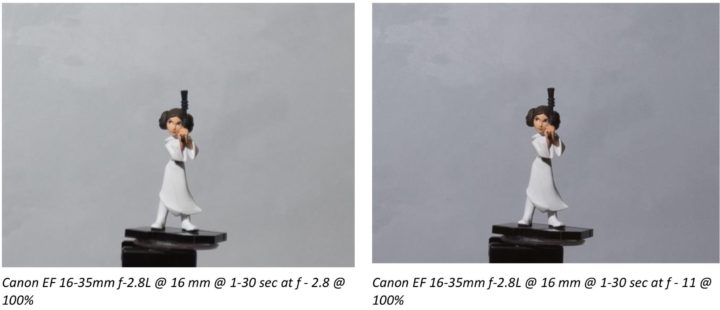
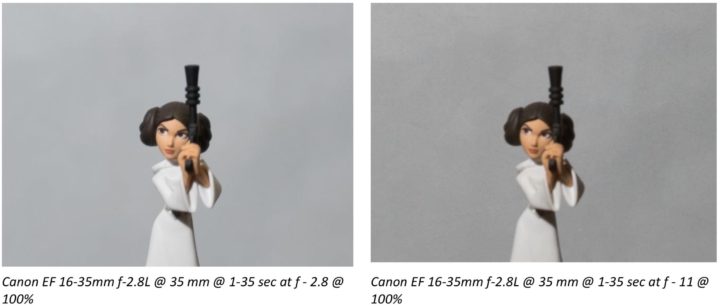
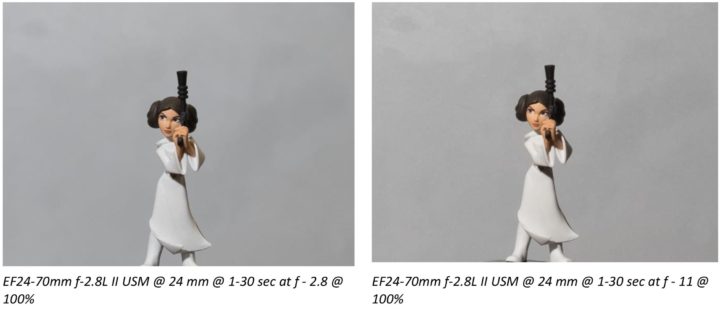
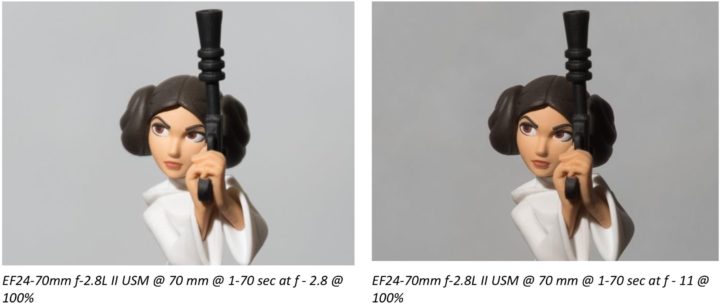
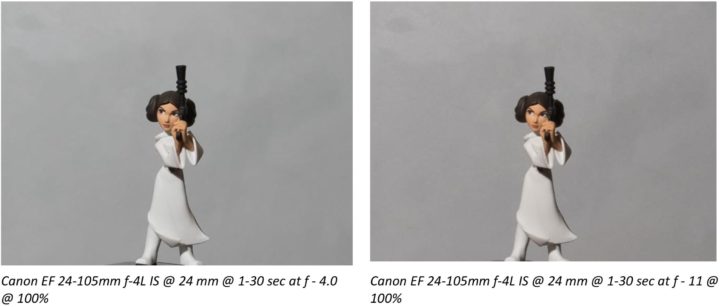
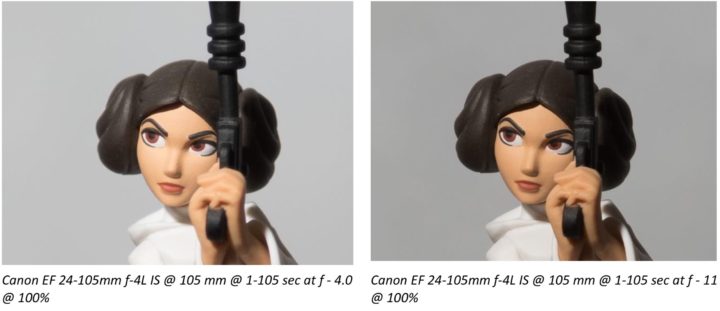
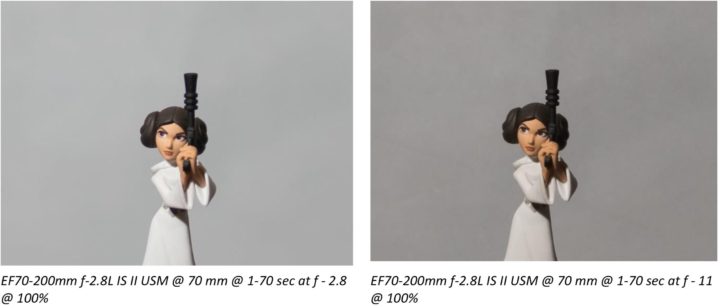
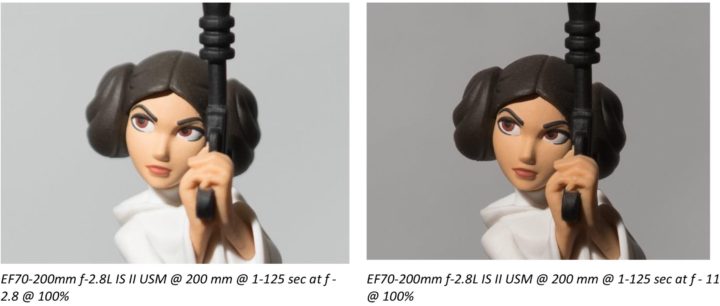
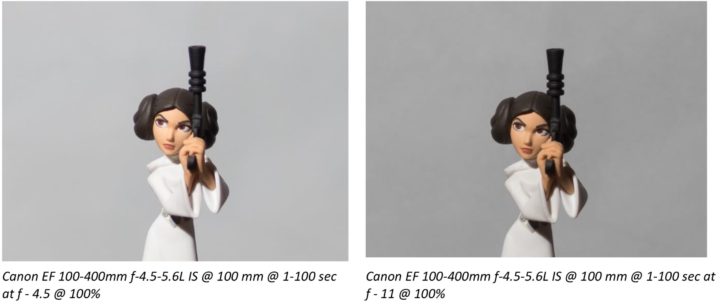
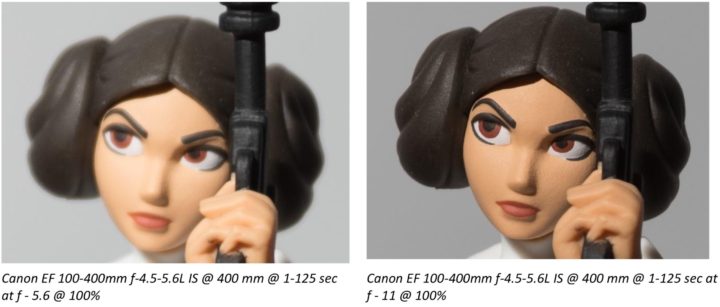
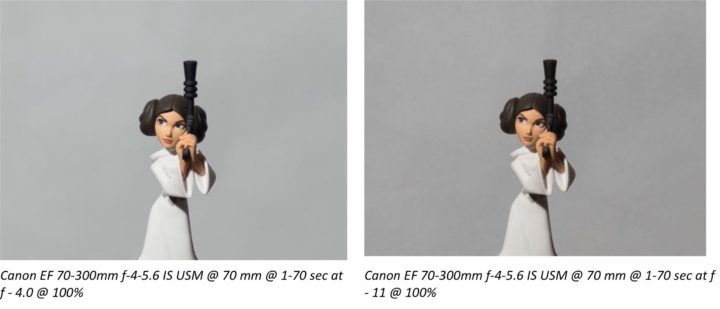
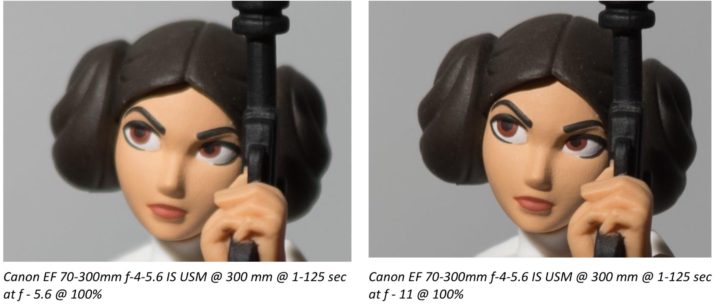
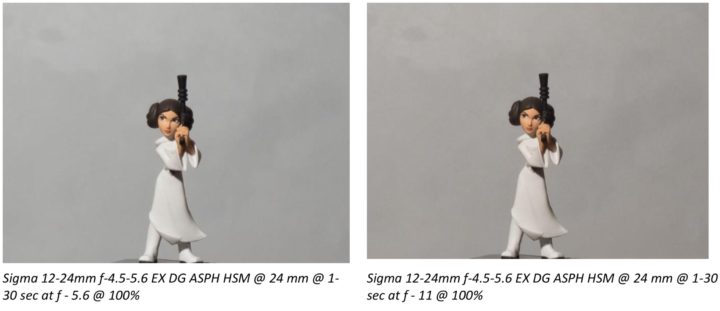
CONCLUSION
After extensive testing I can highly recommend the Steelsring AF adapter for Canon lenses to the GFX. The focus speed, while not fast by any means, is about 80-95% of the native speed of the GFX lenses. I particularly was impressed by the accuracy of the EXIF information which was written into the file. This makes things like lens correction extremely easy – an essential part of any professional work-flow. In addition, full support of the “focus-by-wire” feature of such lenses as the 85mm was a very happy surprise and really helped with the functionality of that lens in particular.
That is not to say that there are not some things that need work. Compatibility with older lenses, while good, could use some improvement. Also, the copy of the adapter I received could lock to the Canon lenses a bit better. Steel informs me that this may be as simple as a better spring in the adapter. All improvements which should come shortly.
Now that the GFX can shoot in 35mm cropped mode, I fully expect these adapters to become much more popular with GFX shooters. So far, I would say that the Steelsring Adapter works as advertised, without any significant issues and some welcome benefits over its competition. If you own or desire Canon EF glass, this is a near essential add to your
REAL WORLD – SOME QUICK SHOTS
As much as we may all want to, not all of us are going to spend our entire photographic career shooting a 3” tall Princess Leia figurine. So, let’s grab the camera, the Steelsring adapter and our Canon lens collection and head outside for some quick shots.
Now, please do not be overly critical as to the quality of the photograph. These are simply quick grabs taken to show the potential of the adapter when used with the Fuji GFX. All shots were taken handheld at whatever focal length, ISO, aperture, and shutter speed I thought was appropriate at the time. They have ALL been edited in Lightroom as I would when developing a final print. This means that they were all corrected for the appropriate lens (including removing whatever amount of Vignetting I thought appropriate), cropped, adjusted, etc. However, no sharpening has been applied, so that you can play with the actual JPEGs yourself if you desire.
Each file is presented in its full-size glory here so you can download them and pixel-peep to your heart’s desire. Have at it!
Canon EF 24-105mm f-4L IS.105 mm.ISO 200.1-1000 sec at f – 4.0
https://vgy.me/rVUUCg.jpg
Canon EF 50mm f-1.4 USM.50 mm.ISO 1600.1-120 sec at f – 1.4
https://vgy.me/ZM1Wmm.jpg
Canon EF 50mm f-1.8.33 mm.ISO 200.1-280 sec at f – 2.8
https://vgy.me/wOakep.jpg
Canon EF 70-300mm f-4-5.6 IS USM.70 mm.ISO 200.1-110 sec at f – 11
https://vgy.me/F2eP5E.jpg
EF24-70mm f-2.8L II USM.70 mm.ISO 400.1-105 sec at f – 7.1
https://vgy.me/6xxZaI.jpg
EF70-200mm f-2.8L IS II USM.200 mm.ISO 200.1-950 sec at f – 2.8
https://vgy.me/yOVQ7j.jpg
Sigma 12-24mm f-4.5-5.6 EX DG ASPH HSM.20 mm.ISO 800.1-40 sec at f – 11
https://vgy.me/YHErlb.jpg
Canon EF 85mm f-1.2L II.85 mm.ISO 100.1-125 sec at f – 1.2
https://vgy.me/3pQmWV.jpg
Canon EF 100-400mm f-4.5-5.6L IS.172 mm.ISO 400.1-280 sec at f – 4.5
https://vgy.me/X7STSv.jpg
EF100mm f-2.8L Macro IS USM.100 mm.ISO 800.1-100 sec at f – 2.8
https://vgy.me/2HsYIg.jpg
guest post by Peter Sills – www.digitalfocus.net

